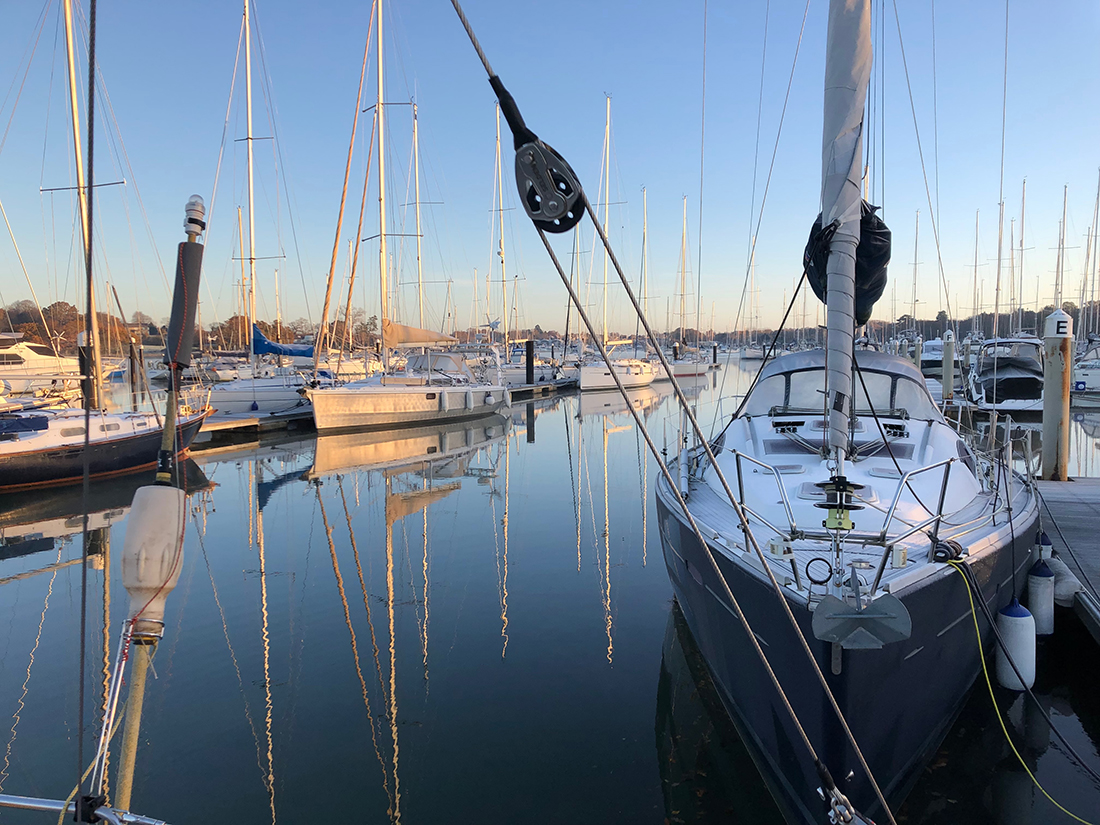The words are mine, but the concept was passed to me long ago.
Motoring at tick-over speed is often much faster than necessary, or sensible, when within the confines of a marina, but many inexperienced skippers feel they are out of control if out of gear.
Not so – but the trick is to learn to feel when the helm is starting to lose its grip, after which you become a hostage to the wind and tide.
By dropping into neutral for a while you can allow the boat speed to decay, and then click it back into gear. Your boat speed will take a time to build again, but the secret lies in what is going on beneath the boat to give you back full control, almost immediately.
When you re-engage the gear, and spin the prop, you will have accelerated a localised parcel of water (a dollop of water?) over the rudder blade long before the boat picks up speed. This will “stiffen the helm” as it increases the “lift” generated by the rudder blade, which is what pulls the stern to one side around the pivot of the keel.
It is often useful to re-engage forward gear just before turning into your finger pontoon, as the turning radius will be tighter than when “freewheeling”, but don’t increase the power unless you want to park on the walkway! Just finding the “click” should be enough.
Be aware that this effect is more pronounced with a shaft drive than a saildrive, as the prop will be closer to the rudder, and it doesn’t work at all with twin rudders! And despite my fear of revving engines in marinas, sometimes a strong wind will require an occasional burst of extra power.
Jim Crick


